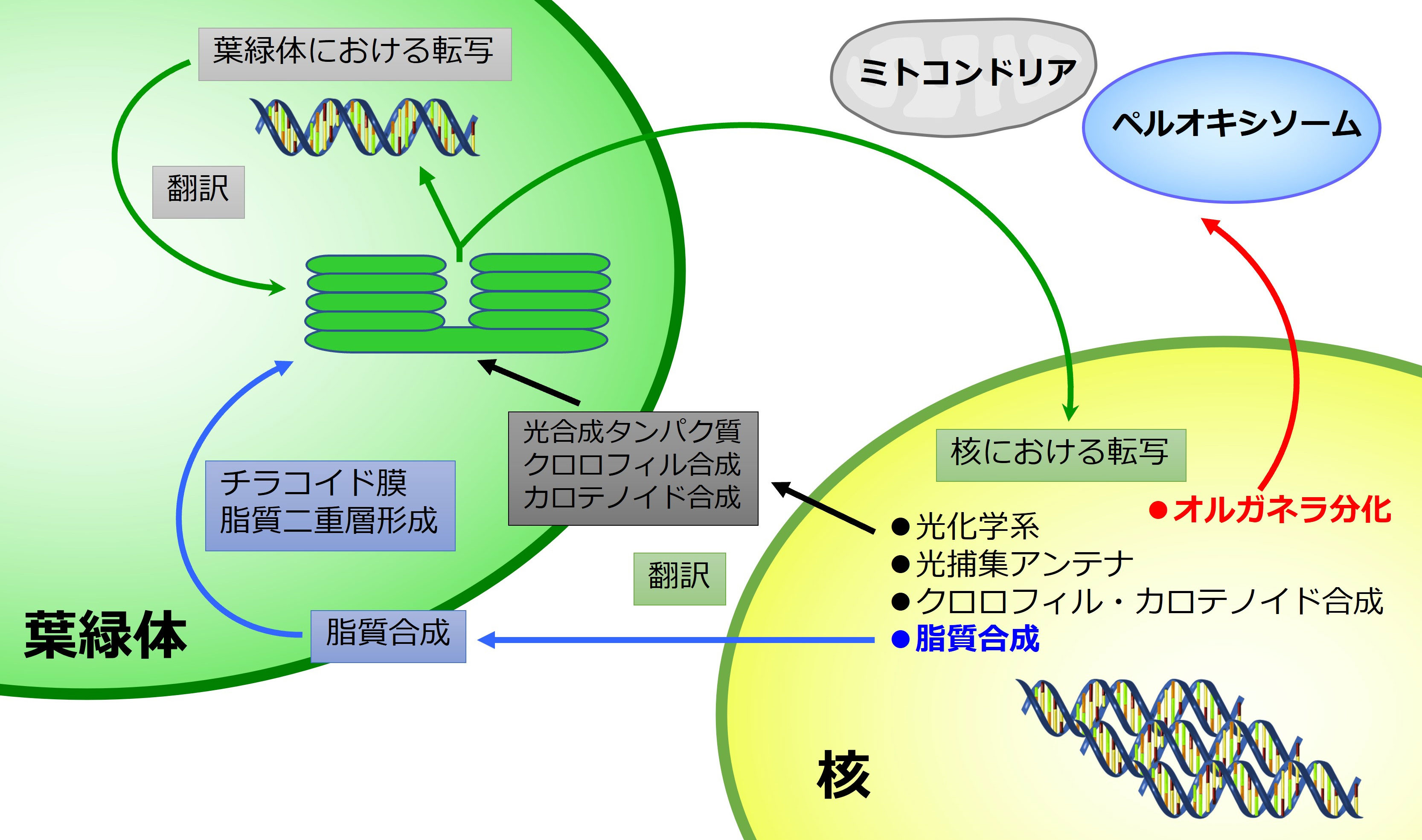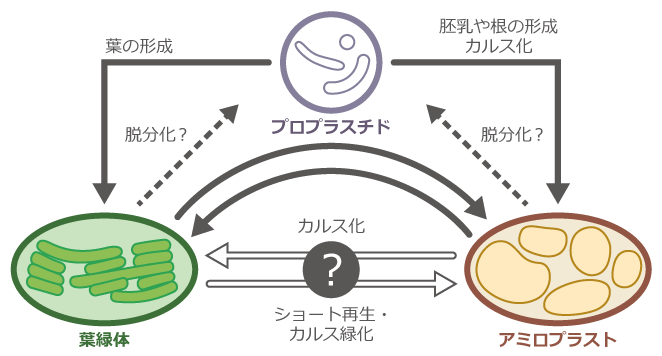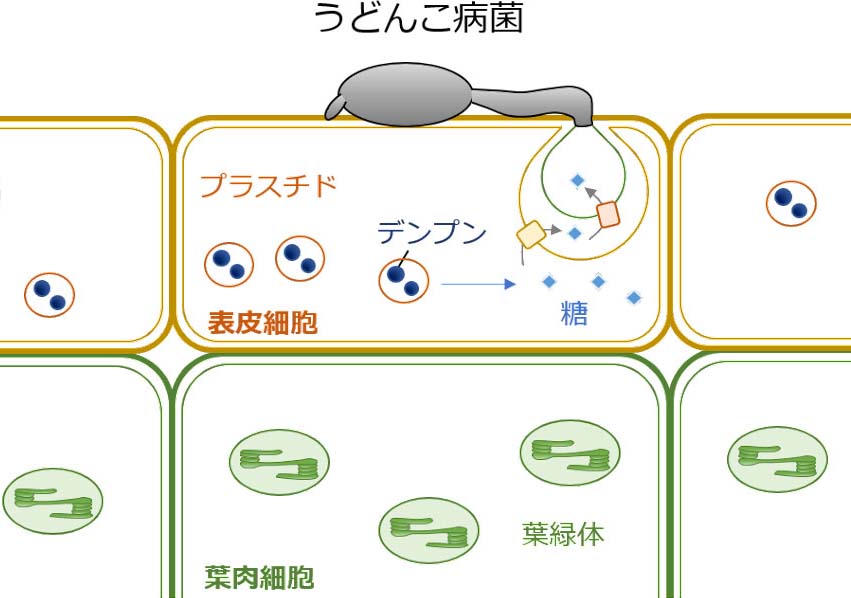プラスチド相転換を制御する因子の機能解析
植物細胞と色素体には高い分化協調性が見られ、葉肉細胞が幹細胞に脱分化するときには細胞内の葉緑体も原色素体に脱分化し、幹細胞が根や葉茎の細胞に再分化するときには、原色素体もそれぞれの細胞に特異的な形態に再分化します。このように植物細胞と色素体の分化状態は強くリンクしていますが、両者の分化可塑性を結びつける分子メカニズムの全容は未だに解明されていません。色素体で機能するタンパク質には核ゲノムにコードされているものと色素体ゲノムにコードされているものがあり、細胞と色素体の分化相転換が起こる際にはそれぞれのゲノムが連動したかたちで大きな変化を示すと考えられます。そこで、本研究では、核の分化調節因子のはたらきにより細胞の分化状態を変化させた際に、核ゲノムと色素体ゲノムのそれぞれでどのような変化が起き、それらがどのように連動性するのかを明らかにすることで、細胞と色素体の協調的な相転換を引き起こす分子機構の解明を目指します。
Functional analysis of the factors regulating plastid reprogramming
Plant cells and plastids are closely coordinated in their differentiation. When mesophyll cells dedifferentiate into stem cells, chloroplasts also dedifferentiate to proplastids, and during the redifferentiation of stem cells, proplastids redifferentiate into various types of plastids depending on the host cell type. However, the molecular mechanisms connecting the differentiation plasticity of both remain unclear. This study aims to explore how changes in nuclear and plastid genome activity occur during cell and plastid differentiation, and how these changes are regulated to coordinate the differentiation of both plant cells and plastids.




